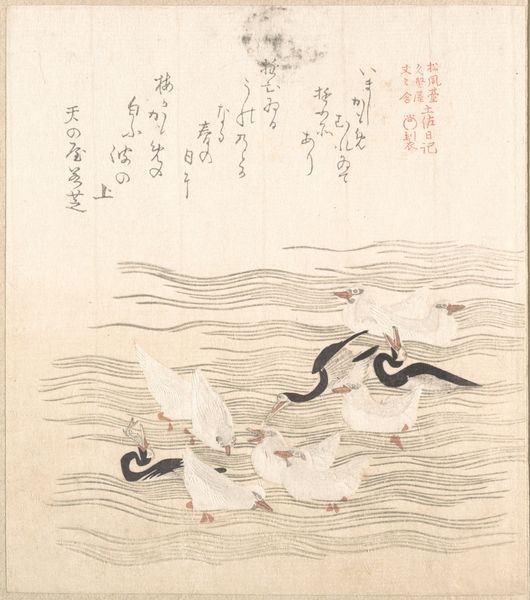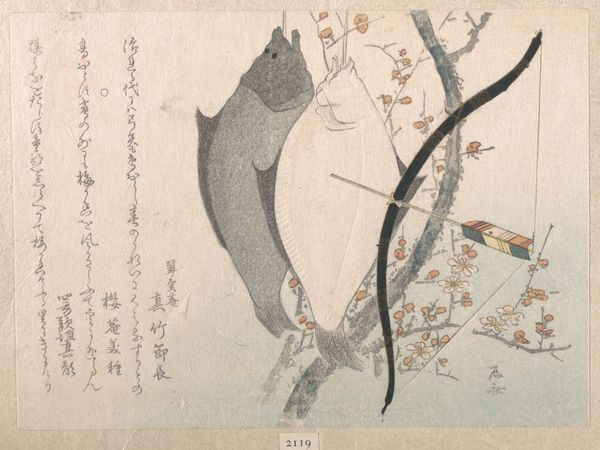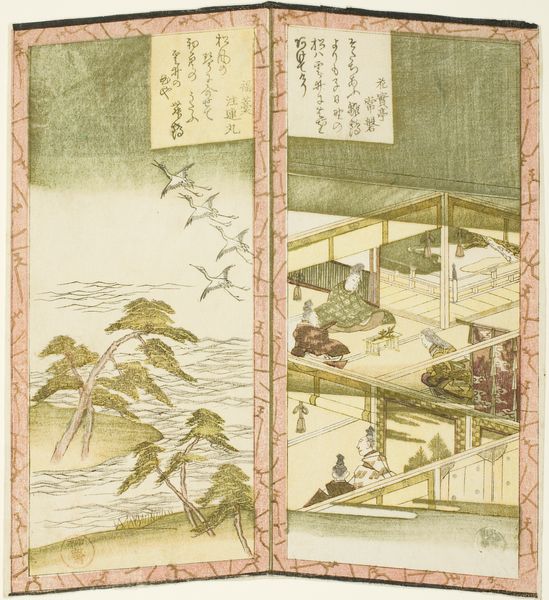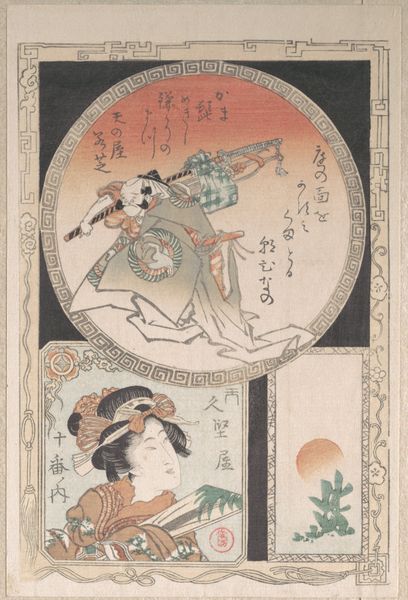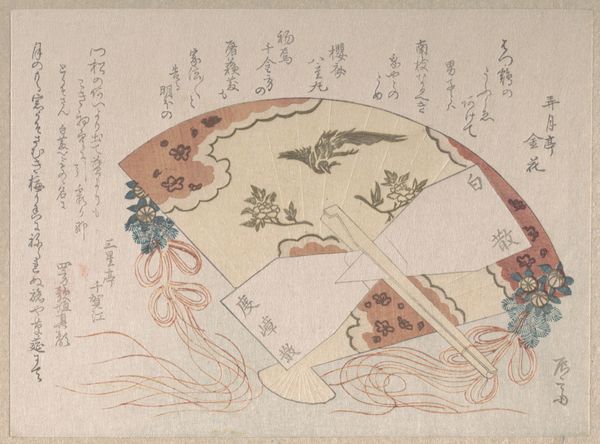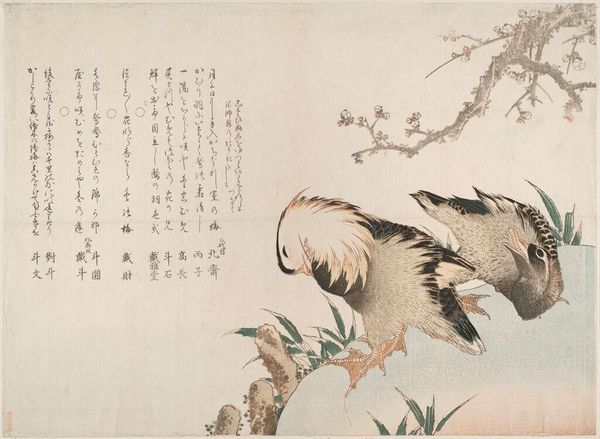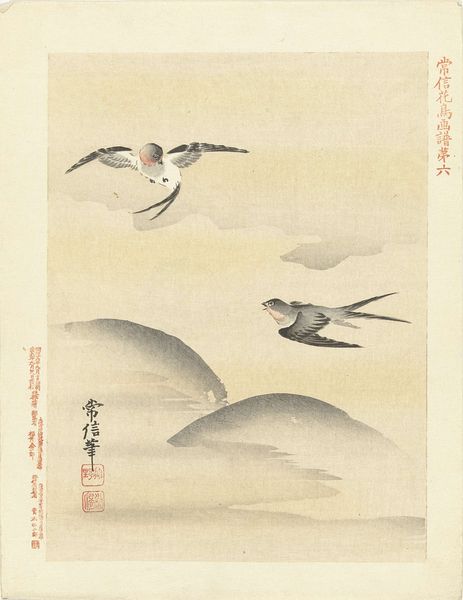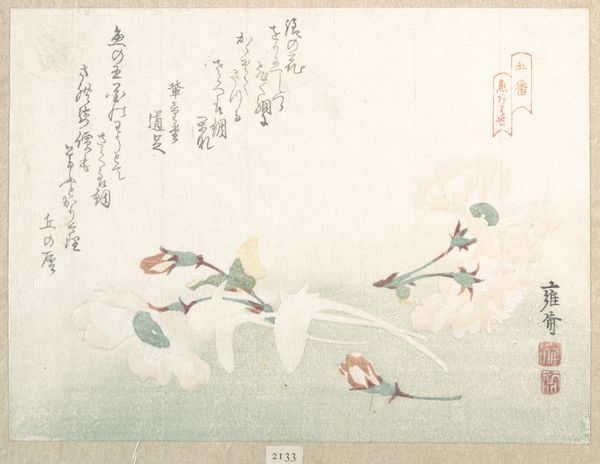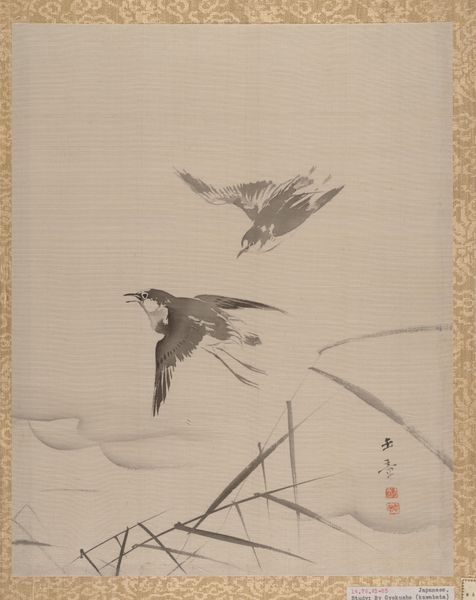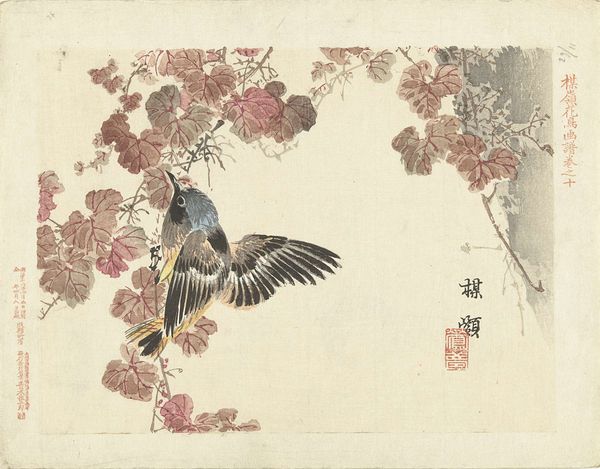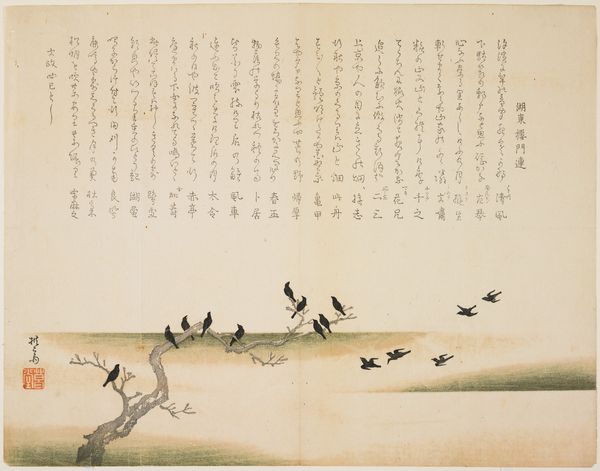
Copyright: Rijks Museum: Open Domain
Editor: So, this is "Bloemen- en vogelschetsen van Keibun- deel één", flower and bird sketches by Matsumura Keibun, created between 1892 and 1897. It looks like it’s ink and watercolour on paper, presented as a hanging scroll. I find it rather serene. What draws your attention most about this piece? Curator: I’m immediately struck by the materials themselves, the specific type of paper used and the texture created by the layering of ink and watercolor. Notice how the deliberate choice of these accessible materials and techniques challenges the rigid hierarchies within the art world. It blurs the lines between “high art” painting and the more quotidian processes of illustration and printmaking. Editor: So, you're seeing a social commentary in the choice of materials? Curator: Precisely. The artwork itself seems to embrace this tension, celebrating the inherent beauty found in commonplace resources and artistic processes. What do you make of the composition within the painted scroll, given this context? Editor: I see the subject, the cranes, placed against a setting sun which looks rather classical, it seems to have a life outside the frame created by the scroll that presents the image. Curator: The choice of a scroll, the paper itself, acts almost as a manufactured or prefabricated element framing nature, it speaks to a cultural fascination with packaging nature. Reflect on the implications of consuming a landscape or a symbol like cranes – turning nature into a product or commodity for visual pleasure and perhaps even nationalistic pride. What labour do we not see reflected in this presentation? Editor: The labour of the paper makers, the ink producers... and then Keibun himself, whose skill is so understated by the delicate washes of colour. I see it now; a deeper level to something that seemed, at first glance, so simple and decorative. Curator: Exactly. The layers of material processes and the societal structures within art production become integral parts of our understanding of the artwork.
Comments
No comments
Be the first to comment and join the conversation on the ultimate creative platform.


